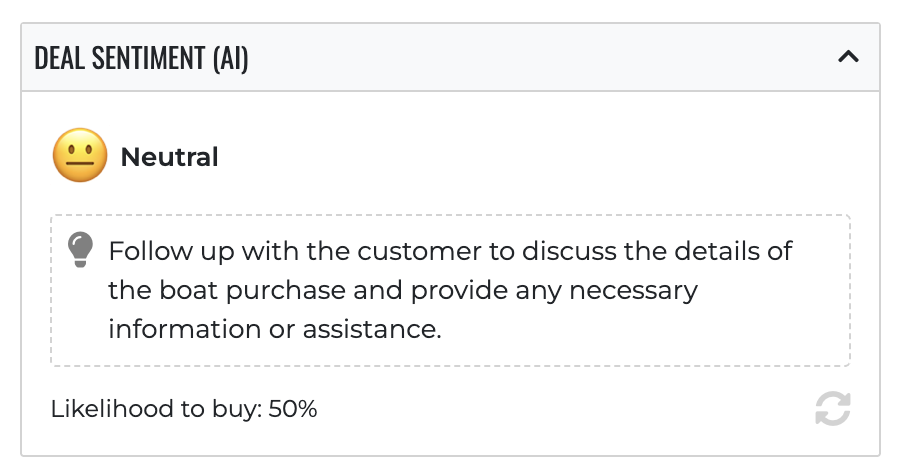When AI Sentiment Analysis is integrated into your CRM, you’re not just managing relationships anymore, you’re mastering them.
What is AI Sentiment Analysis
AI Sentiment Analysis – also called Sentiment AI – uses machine learning and natural language processing (NLP) to detect and classify emotions in text communications.
Instead of reading every customer message yourself, the AI automatically tags each one as:
- Positive (enthusiastic, satisfied, happy customers)
- Negative (frustrated, disappointed, concerned customers)
- Neutral (straightforward, informational communications)
The magic? It’s fast, objective, and works at scale.
Imagine trying to manually review 500 customer emails a week – impossible, right? AI can process that in seconds, surfacing the ones that actually need your attention.
And the benefits are huge: you can address dissatisfaction faster, double down on happy customers, and build deeper connections.
Weapon for Smarter CRM
Sentiment AI isn’t just a nice-to-have, it can be a business accelerator. Here’s what happens when you connect the dots between emotion and action inside your CRM:
1. Proactively Solve Problems
Spot negative sentiment early and intervene before it leads to churn. A simple, well-timed apology or solution could turn a critic into a lifelong customer.
2. Unlock Sales Opportunities
Positive sentiment isn’t just good vibes, it’s gold. Happy customers are prime targets for upsells, cross-sells, and referrals. Sentiment tags help your team strike while the iron’s hot.
3. Save Time and Reduce Burnout
Instead of manually reading every interaction, your team can focus their energy where it counts most: closing deals, supporting customers, and building relationships.
Onpipeline Makes Sentiment AI Easy
Recognizing how critical emotional context is, Onpipeline built Sentiment Analysis directly into its CRM, making emotional intelligence a natural part of your sales and support workflows. Here’s how it works:
Automatic Sentiment Detection
Each time an email, note, or call log is saved, Onpipeline’s AI engine automatically scans and tags the overall sentiment as positive, negative, or neutral.
Instant, Intuitive Visual Indicators
Sentiments are clearly displayed. No digging, no guessing. Teams can immediately spot which customers need a boost.
Native Integration
Forget third-party plugins or messy exports. Sentiment insights live inside Onpipeline’s CRM.
Deal Probability
AI automatically updates the probability of closing deals in real-time. By analyzing customer behavior, the AI provides your sales team with the most accurate, up-to-date sales analysis.
Sentiment Analysis in Action
Sarah, a Sales Manager, uses Onpipeline daily to manage her team’s pipeline. She notices that a top prospect’s last few emails were tagged with a ‘Negative’ sentiment, even though the deal appeared promising on paper.
Sarah jumps in, personally addresses the customer’s concerns about pricing, and offers a customized package. The result? She saves the deal, wins the customer’s trust, and closes a $50,000 sale that could have easily been lost.
Without Sentiment AI, those red flags might have gone unnoticed until it was too late.
How to Get Started
Getting started with emotional intelligence in your CRM is easier than ever:
- Log in to your Onpipeline account.
- Navigate to your contact or deal pages.
- Start viewing real-time emotional insights instantly.
No coding, no technical setup.
The Future is Now
In a world where customer loyalty is fragile and competition is fierce, the businesses that truly understand their customers, not just track them, will come out on top.
Onpipeline’s AI Sentiment Analysis makes this incredibly easy, putting deep customer insights at your fingertips without slowing you down.
It’s important to remember that AI, while powerful, is still evolving. Like in all experimental applications, it can sometimes offer creative or unexpected interpretations. This often happens when customer inputs, such as text or feedback, are unclear or ambiguous. For now, it’s advisable to keep the human brain engaged, reading between the lines.




